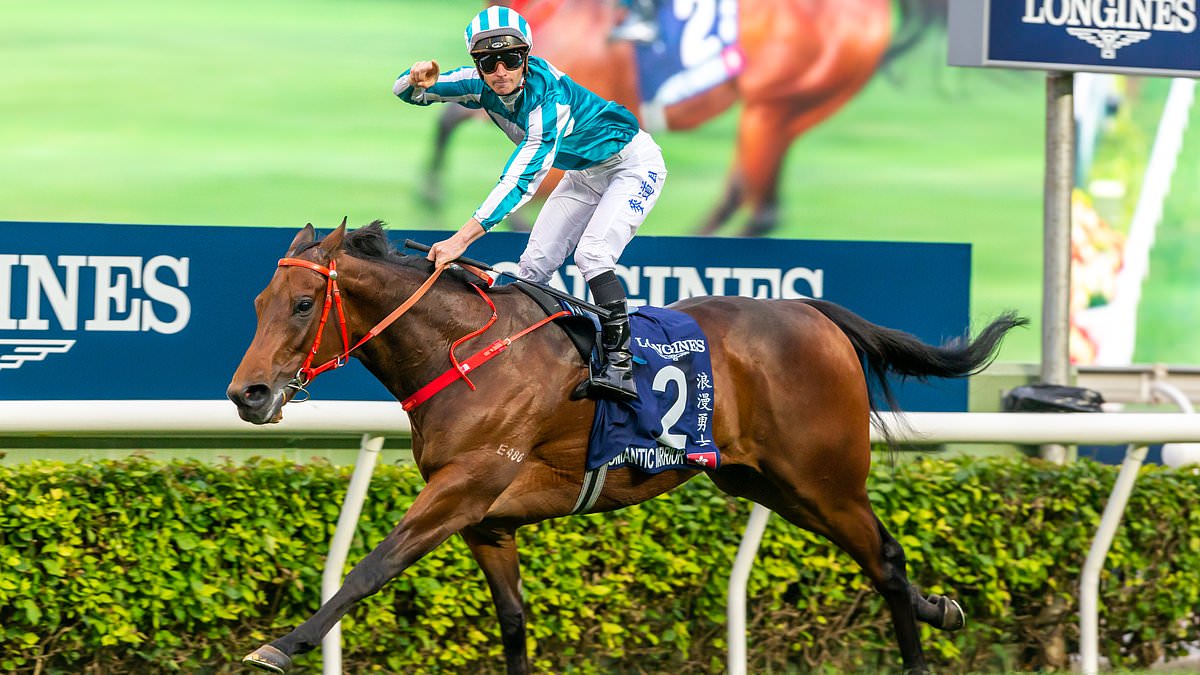QUESTION: I’m a keen racegoer but I’ve never seen a jockey with a moustache or beard. Is there a reason for this?
There is no rule in the British Horseracing Authority’s regulations that explicitly prohibits facial hair. It is a matter of high standards and tradition. Facial hair is so unusual that Martin Lane and Ahmed Atjebi — of Sheikh Mohammed’s horseracing and breeding operation, Godolphin — are the only professional jockeys I can recall ever having it. When Lane sported a beard, he recalled how it was met with hostility at Chelmsford. Interviewed afterwards, he stated: ‘The trainers are very much clean-shaven every day — and they expect us to be clean-shaven every day, and that’s the way it has been and I would imagine the way it’s going to be for the foreseeable future.’ He said he would never wear a beard at a major event such as Royal Ascot or Glorious Goodwood.
Glenn Wise, Manchester
This appears to be a throwback to 19th-century horse training establishments.
It wasn’t uncommon then for jockeys to begin their indentures (apprenticeships) when very young, and obviously they were all fresh- faced.
Trainers of the time ran their stables as an extension of their own moral standards and expected their jockeys, who were regarded as their property, to share the same ideals.
Thus rigorous rules were applied as regards moral and personal habits.
Frederick James Archer (1857-1886) was viewed as the most accomplished jockey of his time.
He began his indenture at age 11, and among the conditions set down on his contract with trainer Mathew Dawson, it was agreed that the aforementioned Fred ‘his master faithfully shall serve, his secrets keep, his lawful commands everywhere gladly do. He shall do no damage to his said master, nor see to be done of others, but to his power shall tell or forthwith give warning to his said master of the same; he shall not waste the goods of his said master, nor lend them unlawfully to any; he shall not commit fornication, nor contract matrimony within the said term;
‘He shall not play at cards or dice tables, or any other unlawful games, whereby his said master may have any loss, with his own goods or others during the said term, without licence of his said master; he shall neither buy nor sell; he shall not haunt taverns or playhouses, nor absent himself from his said master’s service day or night unlawfully, but in all things as a faithful apprentice he shall behave himself towards his said master and all his during the said term…’
Q: Which batsman first used the reverse sweep?
Charlotte Tilly, Clun, ShropshireQ : What are the origins of the song Knees Up Mother Brown? What do the words mean?
Peter Chegwidden, Sheppey, Kent
Q : Having just read about Elizabeth Taylor and her violet eyes, what is the most unusual or rarest eye colour?
Roxanne Halton, Colchester, Essex
These indentures covered a period of five years.
Although things and times have moved on, trainers still demand high standards of all connected within their establishments, and part of this includes personal grooming.
There have been exceptions to this but they are not common even today on the racecourse.
David Urquhart, Burntisland, Fife
QUESTION: Who coined the term ‘urban legend’?
Bizarre stories or myths with a modern twist that are presented as true were first dubbed urban myths. This term was used by U.S. sociologist William H. Friedland for a 1960 conference paper titled Some Urban Myths Of East Africa.
The first use of ‘urban legend’ in the way we mean it today was by American folklorist Richard M. Dorson. In Our Living Traditions (1968), he wrote ‘Urban legends deal with the ghostly hitchhiker, the stolen grandmother, and the death car.’ The term was popularised by fellow American folklorist Jan Harold Brunvand, particularly with the publication of his bestselling book The Vanishing Hitchhiker (1981).
Daniel Keen, Bicester, Oxon
QUESTION: What fuel/propellant is used when the International Space Station needs to move?
The International Space Station (ISS) is a result of international collaboration in building a sophisticated laboratory in low Earth orbit.
The Russian Zvezda module provides the key propulsion system of the ISS. Its thrusters use what is known as a hypergolic propellant, a combination of fuel and oxidiser that spontaneously combusts when the elements come into contact with each other.
The fuel is unsymmetrical dimethylhydrazine and the oxidiser is nitrogen tetroxide.
Additionally, the ISS can be manoeuvred using the engines of docked spacecraft, such as the Russian Progress re-supply vehicles.
Occasionally, the U.S. segment’s control moment gyroscopes are used, but these do not require fuel, as they use momentum to adjust orientation.
R. D. K. Salmon, Plymouth
